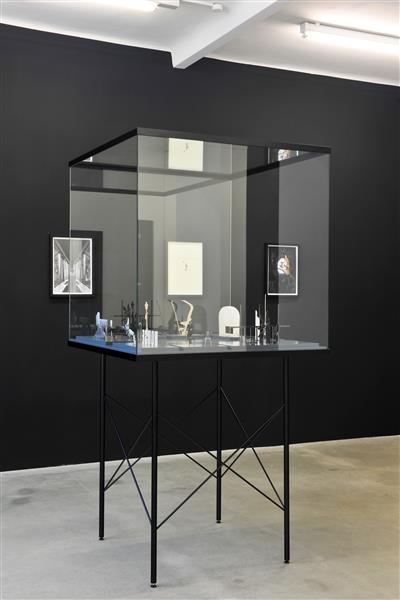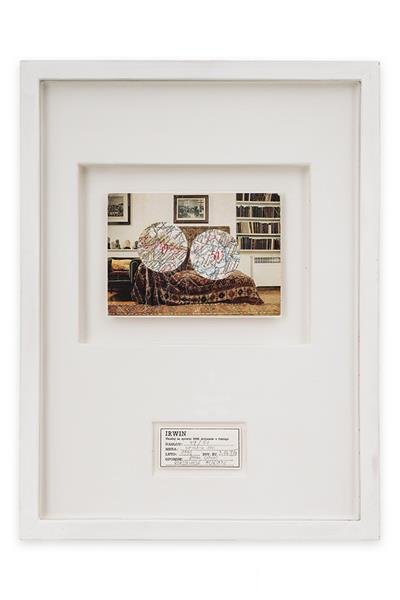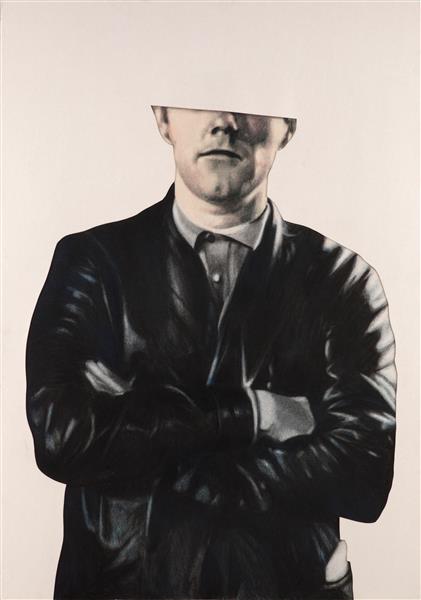Untitled
Jakob Kolding
collage and drawing on paper
40.4 × 28.5 cm
2010
Acquisition 2011
Inv. No. 0223
Jakob Kolding presents a blackened model room concealed within a display case. Inside, there is a modernist room configuration, miniaturized to a minimalist darkroom. The space is reminiscent of 19th century dioramas, however itʼs not a matter of illusion: “This world doesnʼt pretend to be real,” says Kolding. The Danish artist installs paper motifs on flat, black-painted plinths. They are silhouettes made of cardboard that display photos of faces, letters and architectural fragments on the front side. The large glass cube protects the delicate props, that are, at the same time, the only actors on this self-reflexive stage. As images, the elements observe us, as silhouettes they correspond with others. While in theater the so-called fourth wall of the space is opened, here translucency and cross-references come into play. That which is few and its neighbors become meaningful, like in a play by Beckett. A hat and a tree are enough, says Kolding, to process life, death and existence. Kolding sees his model room as a world unto itself that still exhibits decipherable references. Behind an architectonic grating, one can recognize the Argentinian author Julio Cortázar. His story about the tiger is, among other things, an inspiration for Kolding. The animal is found in the piano room of a vacation apartment and is nevertheless neither alien nor alarming. In the end, it becomes a vehicle of mutual aggression, for Kolding a “destabilizing element and a symbol for ambiguity.”
Thomas D. Trummer, 2015 (translation: Virginia Dellenbaugh)
Continue readingPublications
evn collection. 95–2015 Jubilee, Vienna 2015, p. 226–229


